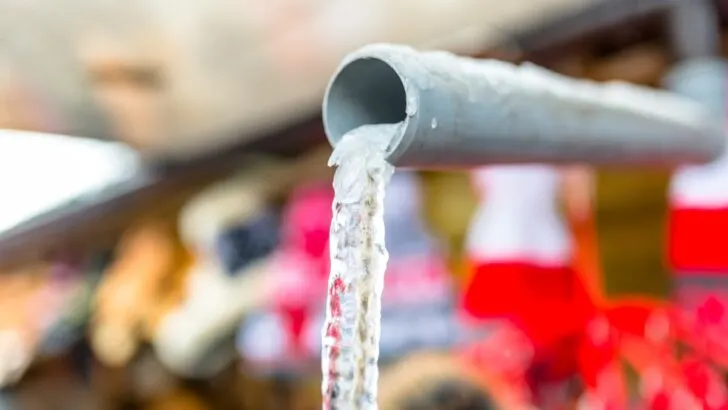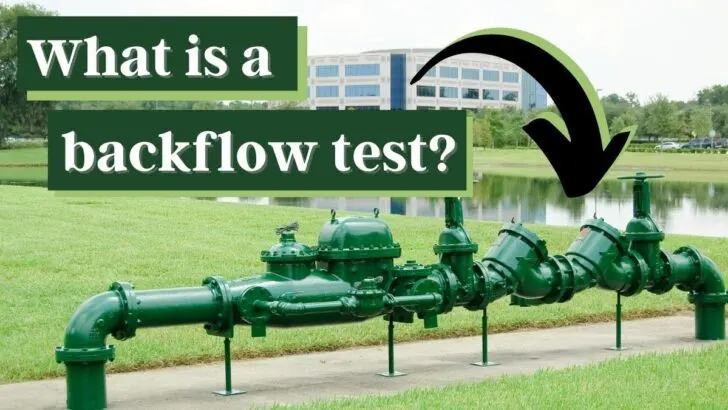Sometimes, wastewater can flow the wrong way and contaminate a building’s water system. What is backflow testing?
Backflow is wastewater flowing the wrong way, which can potentially make people sick. However, a backflow test is checking the backflow preventers and their water pressure to make sure they are still working properly.
Backflow testing ensures that all the water your family or employees use is sterile and safe.
What is Backflow?
Backflow is when water flows in the wrong direction into or out of a home or building. Sometimes, polluted water from your sink and toilet can flow back into your home and contaminate your main water supply. Thankfully, there are ways to test for and prevent this.
What is Backflow Testing?
Backflow testing is when a plumber checks to see if you have a backflow problem and checks to see if your backflow preventers are working properly. They might have to disconnect your water for a little while to check this.
A technician will open and close your backflow preventer valves while the plumber measures the pressure. They will make sure your backflow preventer activates when it should.
After they finish the test, they will turn the water back on and fill out the paperwork. Backflow testing is cheap, easy, and can protect you from contaminated water.
What Do Backflow Tests Measure?
A backflow test determines if water can flow from the wastewater side of the valve to the drinking water side of the valve. The test measures the difference in pressure between the drinking water side and the wastewater side.
The pressure difference between the two chambers should be at least one pound per square inch. If the pressure difference is zero, backflow has already occurred or at least could occur.
Low Water Pressure Can Cause Backflow
If the water pressure in your pipes sometimes drops lower than normal, waste water might flow backwards into your home rather than away from it.
If a lot of water is used somewhere else, the pressure might go down and this might lead to backflow in many homes. For example, if firefighters use their hoses, this uses up a huge amount of water. This can make the water pressure in many people’s pipes drop and lead to backflow.
Other problems with your city’s water supply can also lead to backflow. For example, if a main bursts, water pressure for many people will be low until they repair the pipe.
A lot of people aren’t aware that backflow is possible. They expect the water to work properly, usually even if the power doesn’t. People don’t necessarily know that waste water contaminating their water system is possible.
Backflow Devices Usually Work Well
Thankfully, backflow is not common. Pipes in homes, businesses, and public buildings have simple devices that prevent waste water from flowing backward into a building.
These simple mechanical preventers stop water from flowing back into your main water system. They make sure that water only flows in one direction.
Backflow preventers are often legally required and often must be tested annually and/or when there are any repairs to the water system.
Not Everyone Tests Their Backflow Preventers
Laws requiring testing are not necessarily enforced. Therefore, it is up to individual property owners to get their preventers tested.
If they don’t test them, backflow might occur, and they might end up using contaminated water. People can talk to local companies about checking and fixing their backflow preventers.
Causes of Backflow
Backflow has many causes, including:

- Frozen pipes
- A pipe bursting
- Very high demand for water
- Firefighters using hydrants
Any of these things can lead to abnormally low pressure. All cities need backflow preventers to protect people when the water pressure drops.
What Causes Backflow Preventers to Fail?
Plumbing work that wasn’t done right sometimes makes backflow preventers fail. Pieces of broken pipe can get stuck in your plumbing and lead to backflow.
The backflow prevention valves will fail to close if a piece of broken pipe gets stuck in one of them. Springs on backflow valves sometimes get worn out and must be replaced.
Sometimes Backflow Preventers Must Be Replaced
Sometimes, replacing a spring or removing an object is enough to fix the problem. Other times, the preventer is completely ruined and has to be replaced. Freezing can completely wreck a backflow preventer sometimes.
Older backflow assemblies are more likely to require replacement. Sometimes, you can still find the parts, but they are no longer available in other cases.
Types of Backflow Preventers
There are several effective ways of preventing backflow, so there are several types of backflow preventers. These include:
- Air gaps
- Chemigation valves
- Check valves
- Double check valves
- Atmospheric vacuum breakers
- Reduced pressure zone devices
- Pressure vacuum breaker assemblies
- Vacuum breakers
Key Takeaways to Backflow Tests
Backflow is when wastewater flows back into a building. This can contaminate the water supply and make people sick, so it is important to prevent it.
Anything that greatly lowers water pressure, such as firefighters using fire hydrants or a broken pipe, can cause backflow.
Thankfully, backflow is uncommon because of backflow preventers. These are simple mechanical devices that make sure wastewater flows only in one direction – out of the building, not into it.
If you don’t have your backflow preventers inspected and maintained, they may stop working. Talk to a local company and have your preventers checked and fixed occasionally.


